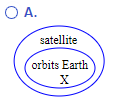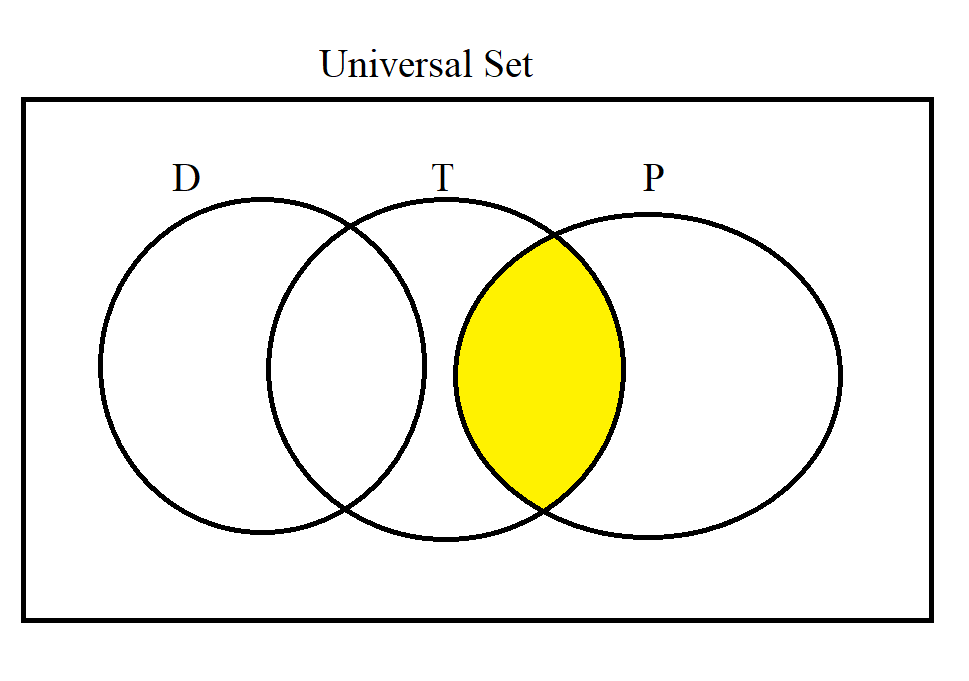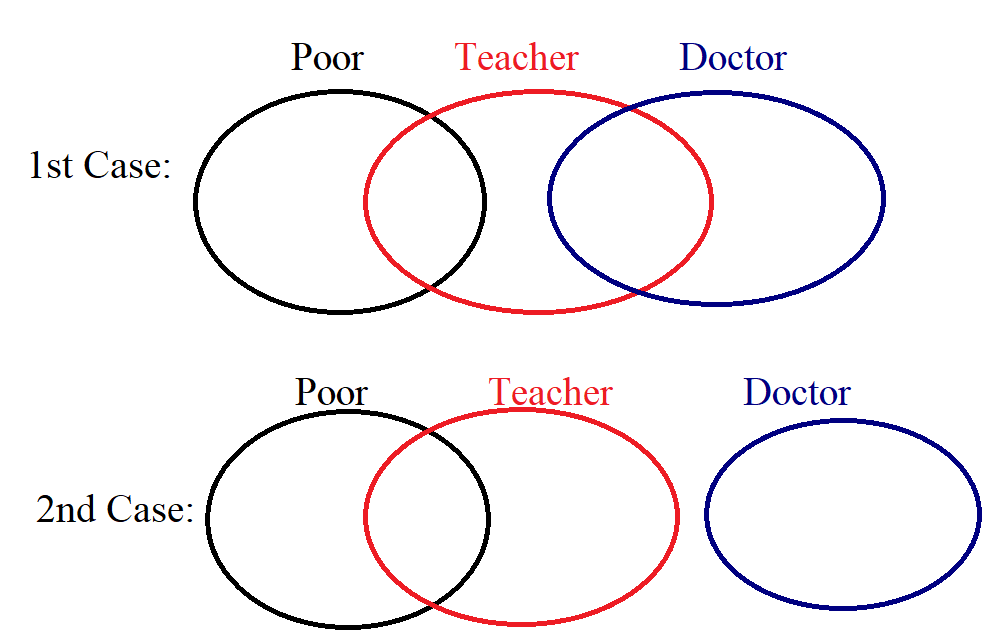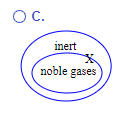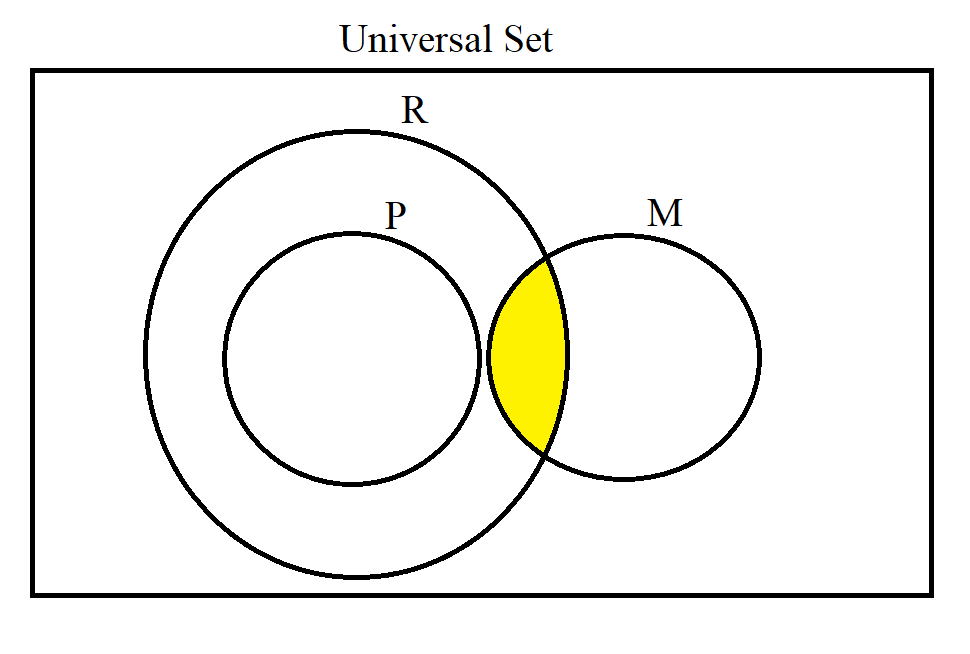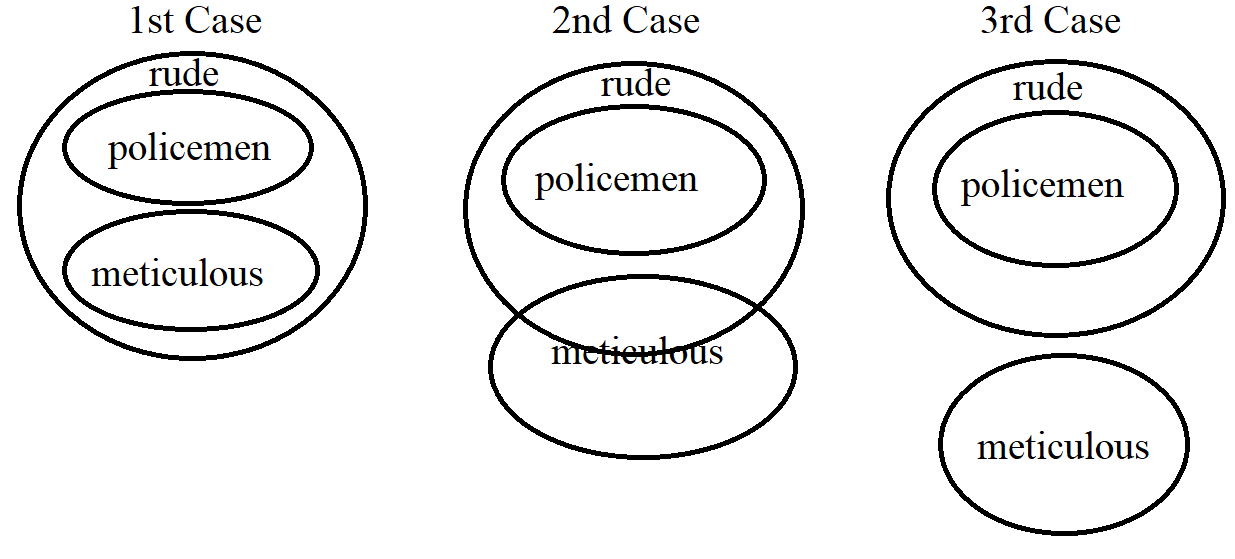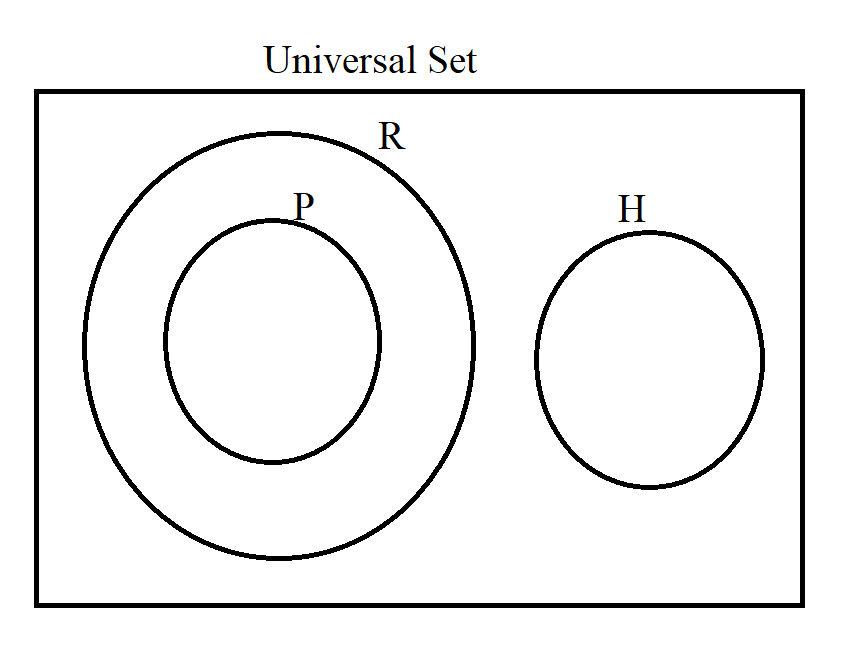Solved Examples on Symbolic Arguments and Syllogistic Arguments
 Unless stated otherwise:
Unless stated otherwise:
Determine whether these arguments are valid or invalid. Show all work.
For symbolic arguments, use at least two methods: by Definition, by Formula and/or by the
Valid Forms of Arguments and Invalid Forms of Arguments for each argument as applicable.
For syllogistic arguments, use Euler diagrams or Venn diagrams as applicable.
(1.)
$
p \leftrightarrow q \\[2ex]
p \underline{\lor} q \\
\rule{1.2in}{0.3pt} \\
\therefore \neg q
$
$ Premise\: 1: p \leftrightarrow q \\[2ex] Premise\: 2: p \underline{\lor} q \\ \rule{2.5in}{0.5pt} \\ Conclusion\: \therefore \neg q \\[3ex] $ Second Method: Definition
Let us draw a truth table of the premises and the conclusion.
| $p$ | $q$ | $p \leftrightarrow q$ | $p \underline{\lor} q$ | $\neg q$ |
|---|---|---|---|---|
| $T$ | $T$ | $T$ | $F$ | $F$ |
| $T$ | $F$ | $F$ | $T$ | $T$ |
| $F$ | $T$ | $F$ | $T$ | $F$ |
| $F$ | $F$ | $T$ | $F$ | $T$ |
| Premise 1 | Premise 2 | Conclusion |
There is no case where both premises are true.
Argument is valid by Definition
Third Method: Formula
Let us draw the truth table for the formula: $[(premise\: 1) \land (premise\: 2)] \rightarrow conclusion$
$[(p \leftrightarrow q) \land (p \underline{\lor} q)] \rightarrow \neg q$
| $p$ | $q$ | $p \leftrightarrow q$ | $p \underline{\lor} q$ | $(p \rightarrow q) \land (p \underline{\lor} q)$ | $\neg q$ | $[(p \rightarrow q) \land (p \underline{\lor} q)] \rightarrow \neg q$ |
|---|---|---|---|---|---|---|
| $T$ | $T$ | $T$ | $F$ | $F$ | $F$ | $T$ |
| $T$ | $F$ | $F$ | $T$ | $F$ | $T$ | $T$ |
| $F$ | $T$ | $F$ | $T$ | $F$ | $F$ | $T$ |
| $F$ | $F$ | $T$ | $F$ | $F$ | $T$ | $T$ |
Argument is valid by Formula
(2.)
$
p \lor q \\[2ex]
p \\
\rule{1.2in}{0.3pt} \\
\therefore \neg q
$
$ Premise\: 1: p \lor q \\[2ex] Premise\: 2: p \\ \rule{2.5in}{0.5pt} \\ Conclusion\: \therefore \neg q \\[3ex] $ First Method: Valid and Invalid Forms of Arguments
Argument is invalid by Misuse of Disjunctive Reasoning
Second Method: Definition
Let us draw a truth table of the premises and the conclusion.
| $p$ | $q$ | $p \lor q$ | $\neg q$ |
|---|---|---|---|
| $T\checkmark$ | $T$ | $T\checkmark$ | $F\times$ |
| $T\checkmark$ | $F$ | $T\checkmark$ | $T\checkmark$ |
| $F$ | $T$ | $T$ | $F$ |
| $F$ | $F$ | $F$ | $T$ |
| Premise 2 | Premise 1 | Conclusion |
Argument is invalid by Definition
Third Method: Formula
Let us draw the truth table for the formula: $[(premise\: 1) \land (premise\: 2)] \rightarrow conclusion$
$[(p \lor q) \land p] \rightarrow \neg q$
| $p$ | $q$ | $p \lor q$ | $(p \lor q) \land p$ | $\neg q$ | $[(p \lor q) \land p] \rightarrow \neg q$ |
|---|---|---|---|---|---|
| $T$ | $T$ | $T$ | $T$ | $F$ | $F$ |
| $T$ | $F$ | $T$ | $T$ | $T$ | $T$ |
| $F$ | $T$ | $T$ | $F$ | $F$ | $T$ |
| $F$ | $F$ | $F$ | $F$ | $T$ | $T$ |
The formula is not a tautology.
Argument is invalid by Formula

